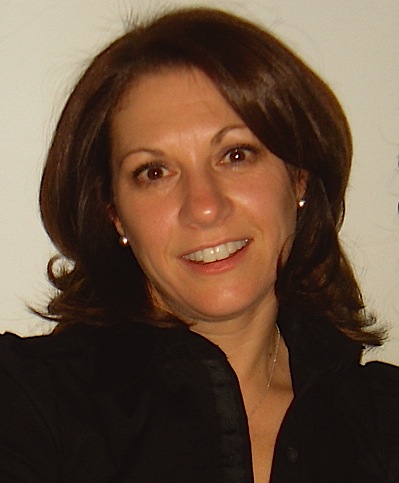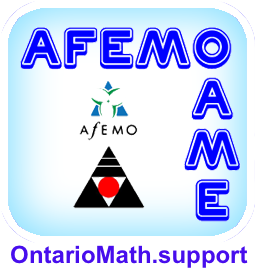President's Message - April 2009
Embracing Change in Mathematics

ANNA JUPP
ajupp@edu.yorku.ca
Over the last several months we have experienced much change locally, nationally and internationally. The election and inauguration of Barak Obama as president of the United States has changed what we thought was possible. With the shifting economy throughout the world, priorities and spending habits have adjusted to address financial uncertainty. Here, at the OAME board of directors, spring brings with it a change in presidency and make up of the Board. In this, my last message as president, I invite you to look ahead and consider the benefits of embracing change in the teaching and learning of mathematics.
Change and the Unknown
In planning our math courses, programs, lessons we must go beyond the knowledge and skills outlined in the Ontario curriculum and consider the demands of the changing world in order to ensure that we are meeting the needs of the 21st century learner. It is the current reality that we as classroom teachers and math educators are preparing students for jobs that currently don't exist. In front of us, we have individuals that will be expected to use technology that has yet to be invented.
What exactly the future brings is unknown, but what we do know is that critical thinkers, effective communicators, and technologically literate citizens will be those who will be better equipped to meet the challenges of the unknown. As we ask ourselves, what are the math skills students will need for the future? What important mathematics will they need to know and do in order to be successful? Which classroom experiences will be most beneficial for the learning of mathematics? I direct you to the OAME Vision and Guiding Principals as a guide for making content and instructional decisions.
A Vision for Learning Mathematics
The learning of mathematics should be based upon the following beliefs and principles:
- Learning is structured around the key concepts of mathematics.
- Learners build on prior knowledge and understanding, and work at a developmentally appropriate level to construct new personal meaning.
- Learners are better able to transfer and to use knowledge meaningfully when new ideas are presented within rich and meaningful learning contexts, and when learners make connections both within and outside of school.
- The learning process is enhanced when new ideas are presented in a variety of ways and when all learners have access to "hands-on" and "minds-on" activities and opportunities. This includes the use of manipulatives, computers, calculators, and hand-held data-collection devices.
- Learning is enhanced when students experience a variety of instructional approaches, ranging from direct instruction to inquiry-based learning.
- Learners require opportunities to interact with each other during the learning process, to teach others, and to explain and justify the processes of mathematics. Learning is enhanced when the learners are encouraged to communicate their understanding.
- Effective mathematics education requires strategies that engage and motivate learners, that help students develop positive attitudes about themselves and about mathematics, and that encourage learners to make positive contributions to the learning environment.
- Learning is enhanced when students and teachers understand learning expectations and assessment standards and participate actively in assessing and evaluating their personal growth.
- Learning is enhanced when teaching, coaching, assisting, supporting, and feedback is planned and designed to improve specific learning and mental processing skills and to accommodate different learning styles and needs.
- Learning is enhanced when teachers plan and reflect together.
- Learning is enhanced when all participants in the process are active partners within a community of learners (e.g., parents, educators, students, and the community).
Trying on change
I call on you to try and implement instructional strategies that may be new or unfamiliar, but potentially are the means of meeting the diverse needs of students. Consider Bansho as a way of consolidating learning and building communication skills. Practice teaching through problem solving so that students may think critically about the concepts and skills they are learning. Investigate new technologies and how they may be used to enhance the teaching and learning of mathematics in your grade or course, but also will provide students with skills that can be taken beyond the classroom and into the future.
Change through connections
Change is exciting but not simple. When considering change, students' needs must be kept at the forefront. Collaboration with colleagues, participation in professional development opportunities, and risk-taking will bring excitement, new approaches, the formation of new partnerships and better mathematics learning environments.
It has been my pleasure to serve you as OAME president. For me it has been a year of change together with on-going opportunity for learning, collaboration, and personal challenge. I thank the members of the Board and Executive, and especially the Executive Directors for their support and encouragement. I also thank all those of you, in the math community, who continue to share the excitement and a passion for mathematics.
Anna
Previous Message:
Change in Mathematics Instruction and Student Success: A look at both sides of the equation
Next Message:
Reflections on the Classroom


















 Like us on FaceBook
Like us on FaceBook